What is CFD How it works?
Contract for Difference, perhaps (CFD) It is a derivative product, Allow you to trade asset and index price fluctuations in both local and international markets. Although it's very complex, But the services they provide to traders are very simple. Contracts for Difference (CFD) allow you to enter the market with a small portion of the value of the purchased asset, This amplifies the likelihood of gains and losses, Also known as leverage. Because contracts for difference focus on price fluctuations, So it's also possible to short the product, This means that traders speculate that asset prices will decline, And profit from this change. finally, They enable traders to hold positions without having to hold ownership of the underlying asset. This makes CFD contracts very suitable for traders who wish to gain greater market exposure with a small portion of their total value while being able to quickly enter and exit trades.
Trading Contracts for Differences, You do not own the actual assets. opposite, The price difference of the underlying asset you exchanged, From opening to closing a contract position. The closure date or contract expiration date is not fixed, This makes contracts for differences different from other forms of derivatives, Like futures. Your contract can be short-term, It can also be long-term.
One advantage of trading a contract for difference is that you can speculate on price movements in any direction, Whether it's up or down. The profit or loss you gain will depend on whether your prediction is successful. Through Contracts for Differences, You can trade multiple assets, Including currency, stock, index, Cryptocurrency (Including Bitcoin) And bulk commodities.
Before attempting, It is necessary to understand the working principle of differential contracts.
video: Instructions for Trading Contracts for Difference

How does CFD trading work?
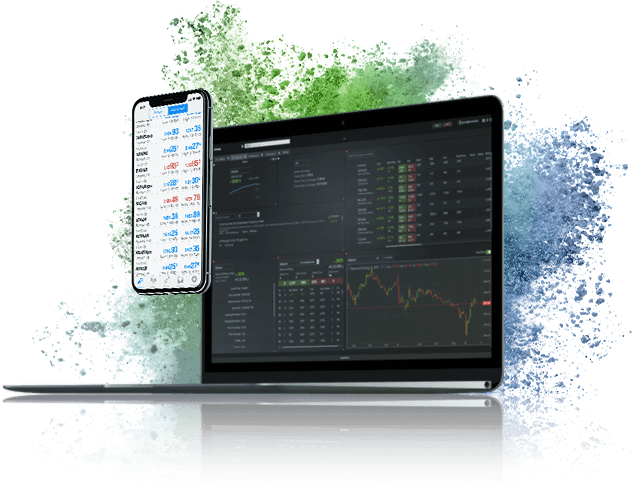
To understand the entire process, Firstly, it is necessary to understand the concept of margin trading. Leveraged contracts for difference can provide you with extensive exposure to price fluctuations, Without the need to invest in the total transaction value. This means that, Compare the funds in the trading account, Leverage can give you greater market exposure.
Trading Contracts for Differences — What is CFD margin?
When you start trading CFD time, You need to open a "Margin account" , Recommended to open at regulated brokers. The broker is able to provide leverage by offering, Allowing you to trade with larger positions. This means that, You have the opportunity to amplify returns with a small amount of capital investment. however, always remember, Leverage can also amplify losses. therefore, Please choose leverage rationally.
To maintain your margin account, A fixed minimum capital amount must always be deposited into the account, As a buffer against potential losses. This is what is called "INITIAL MARGIN" perhaps "guaranty" . It is the difference between the funds you borrowed from the broker and the total trading value of your position.
If you experience losses, And the funds in the account are below the prescribed level, The broker will issue "Notice of Additional Margin Deposit" . This means that you need to deposit the required amount into your account, be called "Maintenance Margin" . "
assume XYZ The trading price of the company's stock is per share 130 dollar. You have decided to purchase at this price 10, 000 A contract. now, If you must pay the total value of the contract, You will spend:
$130 x 10, 000 = $130, 000.
By using leverage, You can obtain the same number of stocks, But the capital investment is relatively low. If the required margin is based on the total transaction value 5%, You only need to account for each in your trading account CFD Unit payment 6. 50 USD as margin.
therefore, The required total margin is
(0. 05 x 130, 000) = $6, 500.
This is far less than $130, 000, But you have gained the same level of exposure, Just like you directly purchased stocks. not only . . . but, You can also obtain 100% The benefits. of course, on the other hand, You will also bear it 100% The loss.
assume XYZ The trading price of the company's stock is per share 130 dollar. You have decided to purchase at this price 10, 000 A contract. now, If you must pay the total value of the contract, You will spend:
$130 x 10, 000 = $130, 000.
By using leverage, You can obtain the same number of stocks, But the capital investment is relatively low. If the required margin is based on the total transaction value 5%, You only need to account for each in your trading account CFD Unit payment 6. 50 USD as margin.
therefore, The required total margin is
(0. 05 x 130, 000) = $6, 500.
This is far less than $130, 000, But you have gained the same level of exposure, Just like you directly purchased stocks. not only . . . but, You can also obtain 100% The benefits. of course, on the other hand, You will also bear it 100% The loss.
The percentage of margin depends on the country you are trading in. Different regulatory agencies have different restrictions on leverage. These restrictions are established to protect traders from significant losses when volatility intensifies.
Trading of Contracts for Difference
"Go Long" perhaps "Short selling"
When you trade contracts for differences, Can you speculate whether the market price will rise or fall. If you believe that prices will rise in the future, You purchase the underlying asset or "Go Long" . however, If you believe that prices will fall in the future, You will sell your assets, or "Short selling" . You can still exchange the price difference between the opening and closing prices, But you also have the opportunity to benefit from the price drop.
Example Explanation
Leveraged Contract for Difference Trading
Assuming you want to trade CFD, The underlying assets are US30, approach "Dow Jones industrial average " . Let's assume US30 The transaction price is:
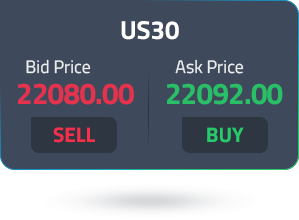
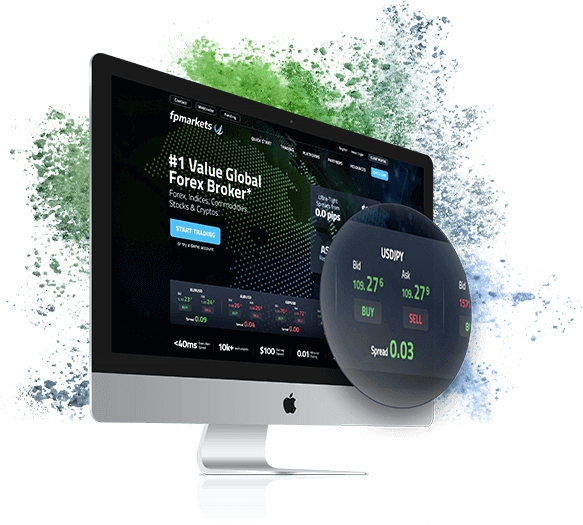
sell out/buy Spread

now, "Selling price" It's the selling price, This is the price at which you sell your assets. The higher of the two is "Purchase price" Or asking price, It is the price at which you purchased the asset. The difference between these two prices is "Spread" . This is your transaction cost. Based on the liquidity of your assets and the broker you choose, The spread can be small or large. for example, Brokers can obtain quotes from a large number of liquidity providers, Provide you with the smallest possible sale/Buy spread.
now, Returning to trading, You have decided to buy 5 share US30 contract, Because you believe that US30 Prices will rise in the future. Your margin rate is 1% . This means that you need to calculate the total value of your position 1% Deposit into your margin account.
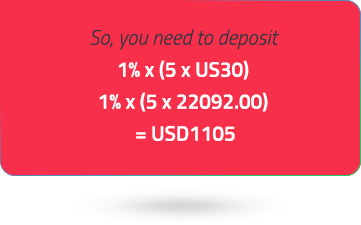
Within the next hour, If the price moves to 22100. 00/22112. 00, So you have a profitable transaction. You can do it through US30 The current (sell out) price 22100. 00 Sell out and close the position.
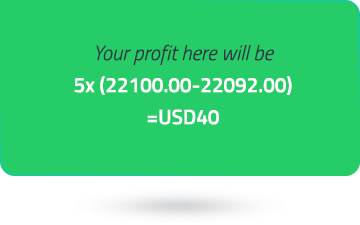
in this case, Price is favorable to you. however, If the price actually drops, Contrary to your prediction, You may suffer losses. This kind of adjustment to price changes and the resulting profits/The continuous assessment of losses occurs every day. therefore, It will bring a net return to your initial margin (straight/burden) . In your free assets (Account balance+profit/loss) Below the margin requirement (1105) Under the circumstance of losses, The broker will issue an additional margin notice. If you are unable to deposit funds, And the market is further unfavorable to you, When your available funds reach the initial margin 50% time, The contract will be closed at the current market price, be called "Stop loss" .
Have you noticed how small price differences provide trading opportunities? This small difference is called "points" perhaps "Percentage of Points" . In the foreign exchange market, Just like the example above, It is used to represent the minimum price increment in currency prices. For items including the US dollar AUD/dollar Waiting for assets, The maximum number of points displayed is after the decimal point 4 position. however, For currency pairs that include the Japanese yen, For example, Australian dollar/yen, Quotations are usually reserved at most 3 Place Decimal
This kind of adjustment to price changes and the resulting profits/The continuous assessment of losses occurs every day. therefore, It will result in a net return on your initial margin (straight/burden) . If your initial margin is low, The broker will issue a margin call notice. If you are unable to deposit funds, The contract will be closed at the current market price. This process is called "marking to market" .
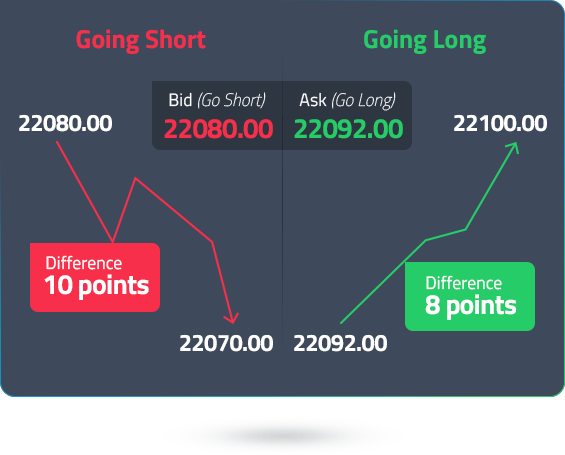

How to use contracts for difference to hedge?
now, "Selling price" It's the selling price, This is the price at which you sell your assets. The higher of the two is "Purchase price" Or asking price, It is the price at which you purchased the asset. The difference between these two prices is "Spread" . This is your transaction cost. Based on the liquidity of your assets and the broker you choose, The spread can be small or large. for example, Brokers can obtain quotes from a large number of liquidity providers, Provide you with the smallest possible sale/Buy spread.
A significant advantage of trading contracts for differences is the opportunity to hedge your investment portfolio against short-term market fluctuations within existing positions. Hedging is a strategy you can use when investing to resist downside risks. You can also limit your earnings to achieve this.
therefore, Assuming you have value 150, 000 Australian dollar stock investment portfolio, This includes ASX 200 Famous stocks in the index. These are divided into 10 part, Each section 15, 000 AUD. You can have value 15, 000 The Australian dollar Adelaide Brighton Stocks and Value 15, 000 The Australian dollar ANZ Banking Group Ltd stock.
now, If you believe that the stock prices of these two companies may suffer short-term declines due to poor earnings reports, You can offset some of the potential losses by shorting them through price difference contracts.
You don't need to sell these stocks on the public market, But in Adelaide Brighton and ANZ Banking Group Ltd Take on two short positions in price difference contracts. It may take approximately 10% Market risk exposure, approach 3, 000 AUD, Only then can we establish this kind of hedge.
however, Why choose to short contracts for differences, Instead of simply selling stocks, Then buy again after the price drops? The reason for choosing the CFD route may be:
When you sell your stocks, You will receive capital gains, This is taxable. Unless you want to get rid of these assets once and for all, Otherwise, it would be unnecessary. In a contract for difference, You do not need to pay stamp duty, Transaction costs will be limited to margin and spreads only.
If the market does indeed decline, The losses in your stock investment portfolio will be offset by your short positions in differential contracts.
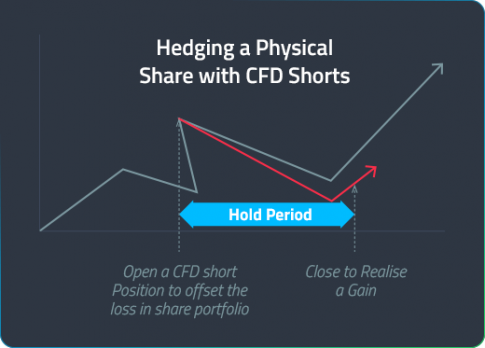

Holding period
now, After the market closes every day, Any CFD position in your account may incur holding costs. This depends on the applicable holding rate, And your position direction; Based on this, Cost can be negative or positive. Holding cost is one of the costs of trading differential contracts.
How to start trading contracts for differences?

auxiliary word for ordinal numbers 1 pace |
Building a knowledge framework
If you have already reached this point, So you have entered the 1 pace. Knowledge is your most valuable asset, You should learn as much as possible about contracts for differences and how to trade them. This includes understanding basic trading terms and concepts, And how to use our advanced online trading platform. FP Markets Trader Center Blog (Traders Hub Blog) It is an excellent resource center, Having a series of research and teaching centers.
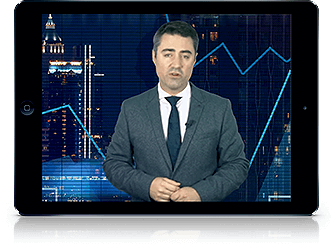

auxiliary word for ordinal numbers 2 pace |
open FP Markets trading account
exist FP Markets Register and open with regulated CFD brokers Simulated account perhaps real account FP Markets was established in 2005 year, We are well aware that traders are seeking an excellent trading experience, And meet the needs of traders by focusing on several key areas. include:
Ultra-low point difference Thanks to good relationships with top liquidity providers, The spreads of major currency pairs can usually be as low as 0. 0 drop.
fast executive We're at NY4 The central trading server is connected to our through fiber optic cables ECN Network and liquidity providers. This ensures ultra fast execution and ultra-low latency.
advanced technique Our strength in the field of technology lies in our ability to use automated trading strategies (Like an intelligent trading system (EA) Copy the trading system) One of the reasons why people provide ideal conditions.
product exist FP Markets, You can trade foreign exchange, stock, precious metal, index, commodity, Cryptocurrency and ETFs The Contract for Difference. We use desktop and mobile applications, Providing services in global financial markets 10, 000 Multiple tradable contracts for difference (CFD ) product. Learn more What can you trade.
customer service We are honored to provide our clients with award-winning customer support. We have a dedicated multilingual customer support team, Can provide 7 day 24 hour^24/7 service. We provide multiple contact methods, include Online Service , Phone and email.
auxiliary word for ordinal numbers 3 pace |
Develop trading strategies
Contracts for Difference can provide you with exposure to multiple asset classes, All of these can be done on a single trading platform. When developing a trading plan, Several factors should be considered, include:
The asset category you wish to trade
Trading funds
time commitment
Risk appetite
Trading Experience
Developing appropriate trading plans and sticking to them is crucial for maintaining discipline and implementing sound real-time risk management strategies. FP Markets Provide a range of trading e-books and Webinar, Can help you develop the most suitable trading plan for you.
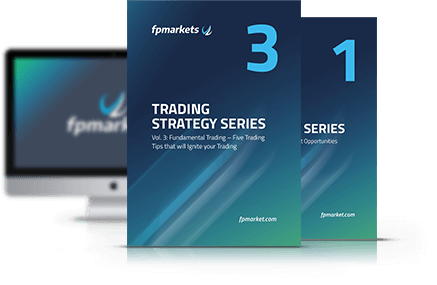
auxiliary word for ordinal numbers 4 pace |
Fundamental and Technical Analysis
Through market analysis, Traders are able to identify volatile markets and potential trading opportunities. There are two methods for analyzing the market, Fundamental analysis and technical analysis. Fundamental analysis involves geopolitical events that may affect global financial markets, Economic data release and unexpected news events.
Technical analysis, on the other hand, involves using market data to identify trends and make trading decisions. By using technical indicators, You can make rational decisions about potential future price trends and patterns. trading platform (in compliance with MetaTrader 4 and MetaTrader 5) Provide pre installed indicators and chart tools, Can assist in conducting comprehensive market analysis.
auxiliary word for ordinal numbers 5 pace | Choose a trading platform
Multiple choices are available FP Markets One of the main advantages of. Our trading platform series includes MetaTrader 4, And with our own FP Markets Mobile trading application. Choose a trading platform that can provide you with trading flexibility and stability. All of our trading platforms offer a variety of tools, Assist in market analysis and seamless execution of trades.
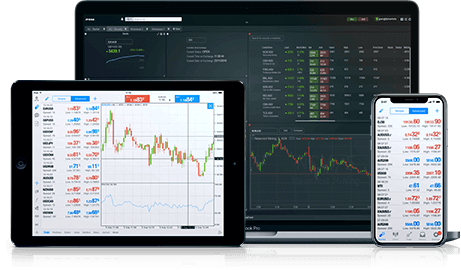
auxiliary word for ordinal numbers 6 pace |
risk management
Regardless of market conditions or position size, Risk management is crucial for every transaction. To limit potential losses, Below are several tools that you will use:
Stop loss order: When the market reaches a certain price level, Intelligent execution of stop loss orders enables the system to automatically close positions. When the market deteriorates, This can minimize losses to the greatest extent possible.
Profit taking orders: Once the profit reaches a specific level, Take profit orders will sell your position. This can protect the position from unnecessary market risks.
Trailing Stop: If the market is favorable to you, This will further drive your stop loss, But once the market deteriorates, It will close its position. This type of order can prevent your position from being liquidated too early.
Advantages of Trading Contracts for Difference
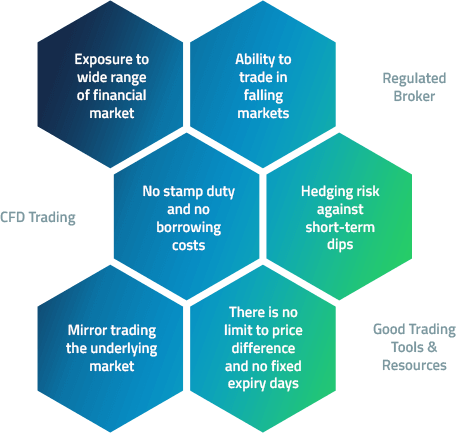
Extensive financial markets: pass through FP Markets Conduct CFD trading, You can enter the largest financial markets around the world. Our CFD products include foreign exchange, stock, index, metal, Commodities and Cryptocurrencies 10, 000 Multiple tradable tools. This includes the currency, the US dollar/Currency pair of Australian dollar and stocks of the world's largest companies such as Apple and Amazon.
Trading in a declining market: One of the unique features of CFD trading is that they provide you with "Go Long" perhaps "Short selling" ability. In a typical financial market, Trading can only be held "Long" And benefit from the price increase. opposite, You can open "SHORT POSITION" , And benefit from the declining price trend. This provides traders with additional trading opportunities.
No stamp duty: Because you do not own the underlying asset, Therefore, there is no stamp duty related to the trading of price difference contracts. in addition, By using leverage, Traders can gain greater risk exposure by using margin trading, So as to effectively utilize their funds.
lever: Provide a cost-effective investment approach, Because you only need to deposit the full value of the transaction (bond) A small portion can be opened for warehousing. The required margin is due to the tool, Liquidity and other factors vary.
Effective hedging tools: A significant advantage of trading Contracts for Difference (CFD) is its use as a hedging tool. It can be used to hedge your investment portfolio against short-term market fluctuations within existing positions. Hedging is a strategy used by CFD traders, Instead of selling holdings in other instruments that may have relevant tax implications.
Mirror trading basic market: The purpose of a contract for difference is to reflect the trading environment of its underlying market, Including price. Purchasing Amazon stock price difference contracts is equivalent to buying a single Amazon stock traded on NASDAQ.
No fixed term: Different from other derivatives such as options and futures, The contract for difference does not have an expiration date. You can hold it as needed CFD The length of time.
When it comes to trading contracts for difference, Three numbers need to be considered - "selling price" , "purchasing price" and "Spread" . "selling price" (sell out) It is the selling price usually displayed on the left side, (取决于上下文, in compliance with"but "purchasing price" (buy) The price is the higher of the two and the price at which you purchased the asset. The difference between these two prices is "Spread" , It's transaction cost. Based on the liquidity of your assets, The price difference may be small or wide.
FP Markets No credit or debit card deposit fees charged. The transaction cost depends on the type of account you open and the platform you use (MetaTrader 4 ) . Any CFD positions held overnight in your account may also incur holding costs. This depends on the applicable holding interest rate, And your position direction; Based on this, Cost can be negative or positive. Read more information about swap rates.
yes. exist FP Markets, We deeply recognize that before making capital investments, Must understand contracts for price differences CFD Concept and develop your own trading plan. therefore, We provide traders with a Simulated account , Allow them to use virtual currency for transactions. Once ready to proceed to the next step, You can open it real account, And explore our Deposit options.
yes, CFD trading is legal in Australia. CFD Suppliers and brokerage firms are subject to the Australian Securities and Investments Commission (ASIC) Regulatory oversight, Supervision and surveillance. To ensure investor protection, Proper custody of funds, transparency, Financial and Regulatory Compliance, To achieve the successful development of the securities market, They must comply with some of the strictest international norms and regulations. CFD trading in Australia and the Financial Conduct Authority in the UK (FCA) The European Securities and Markets Authority (ESMA) Waiting for other major markets to remain consistent.


yes, You can trade contracts for difference without leverage (Contract for Difference) . Most brokerage firms provide 1: 30 Adjustable leverage ratio, Few brokerage firms allow investors to trade contracts for difference without leverage. Trading contracts for difference without leverage requires investing more capital to reduce risk and return. in contrast, Leveraged CFD trading will minimize capital requirements to the greatest extent possible, In exchange for more risks and maximizing profits.


The difference between contract for difference and futures trading lies in, When trading a contract for difference in price, both parties involved in the transaction, Do not trade financial instruments on maturity dates or preset prices. In futures trading, The transaction between the buyer and the seller is executed on a predetermined future date and at a set price, CFD (Contract for Difference) It is the exchange of the price difference between the opening price of securities or underlying assets. And the deadline for the contract. Trading contracts for difference may require less capital, But the risks involved in futures trading may be relatively small.
Contract for Difference (CFD transaction) The profit and loss of the activity when trading for profit, Can be evaluated as income and deductions under the income section of your Australian tax return. The main difference in the Australian CFD trading tax lies in the category of traders (Professional or Retail) And the purpose of the transaction. Professional traders and businesses can apply high trading volumes, Appropriate standards for record keeping and transaction history are used to apply for non-commercial transaction losses. It is recommended to contact a qualified tax professional before entering into CFD trading, To further clarify Australian taxation.